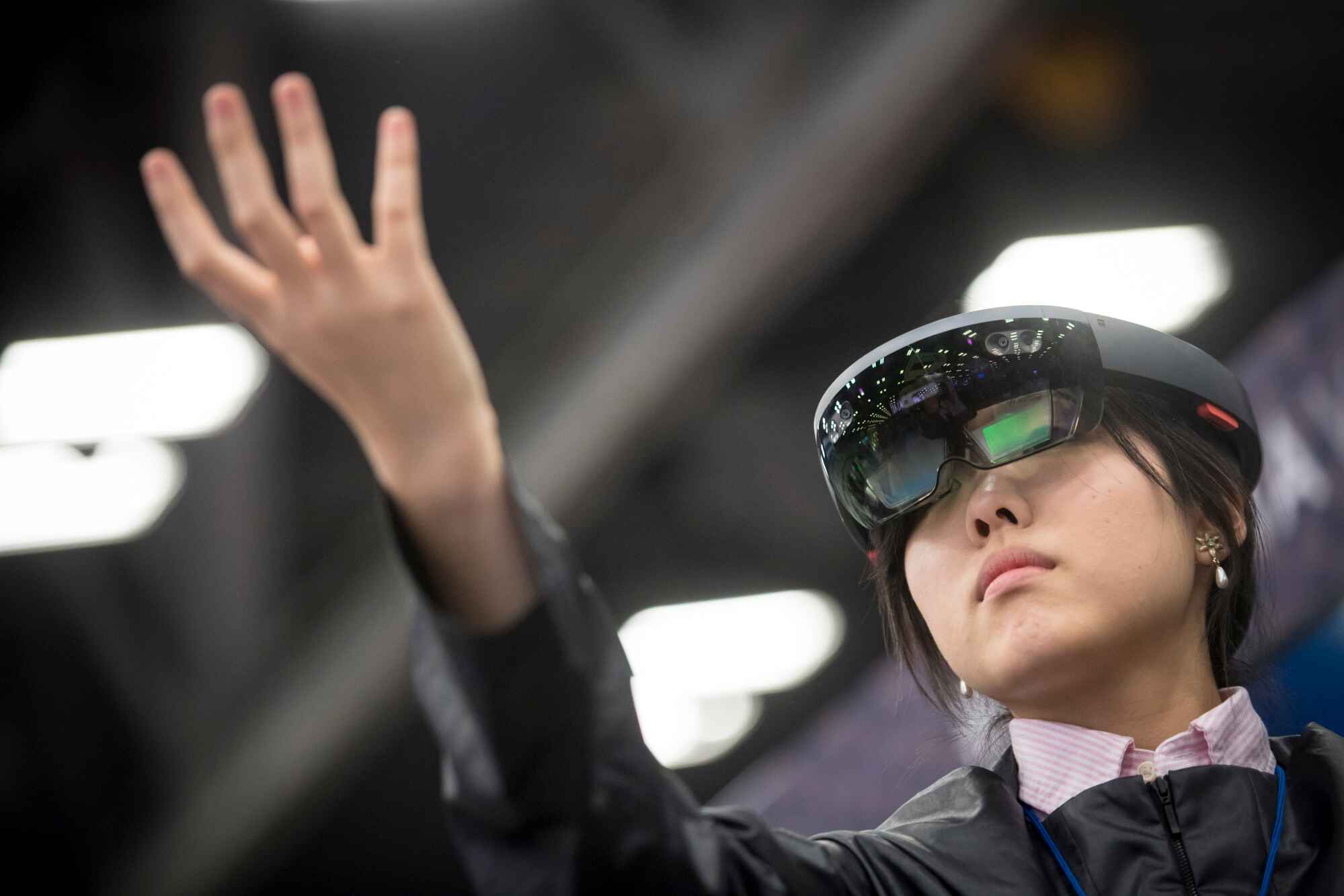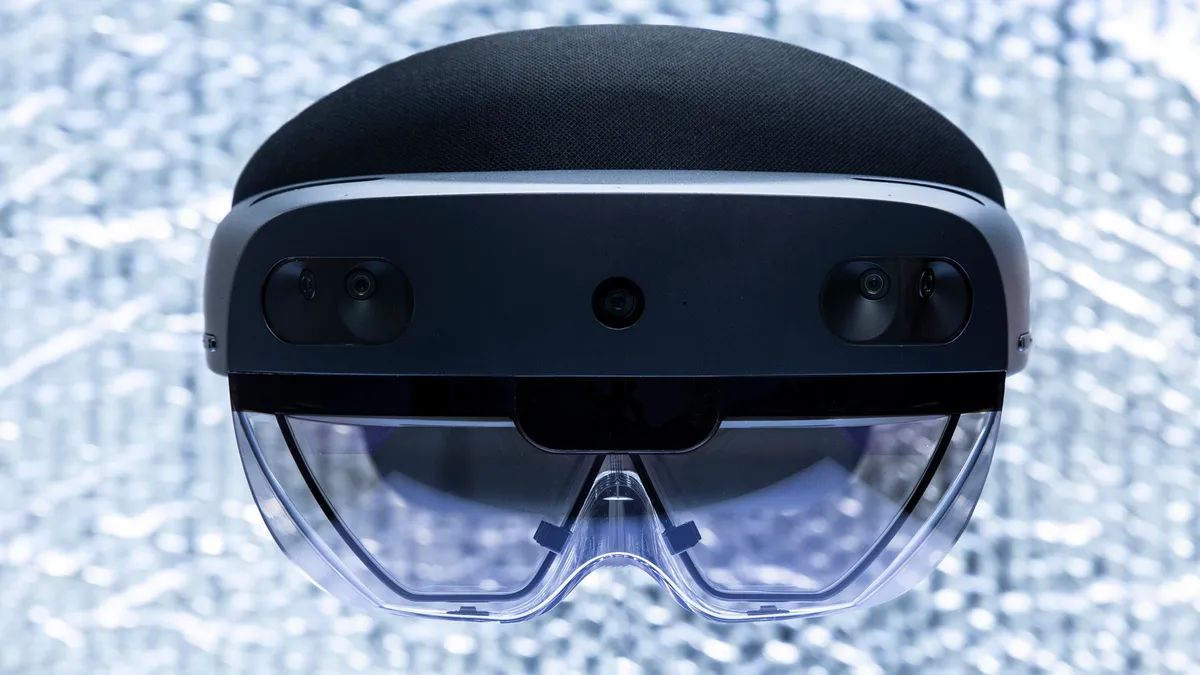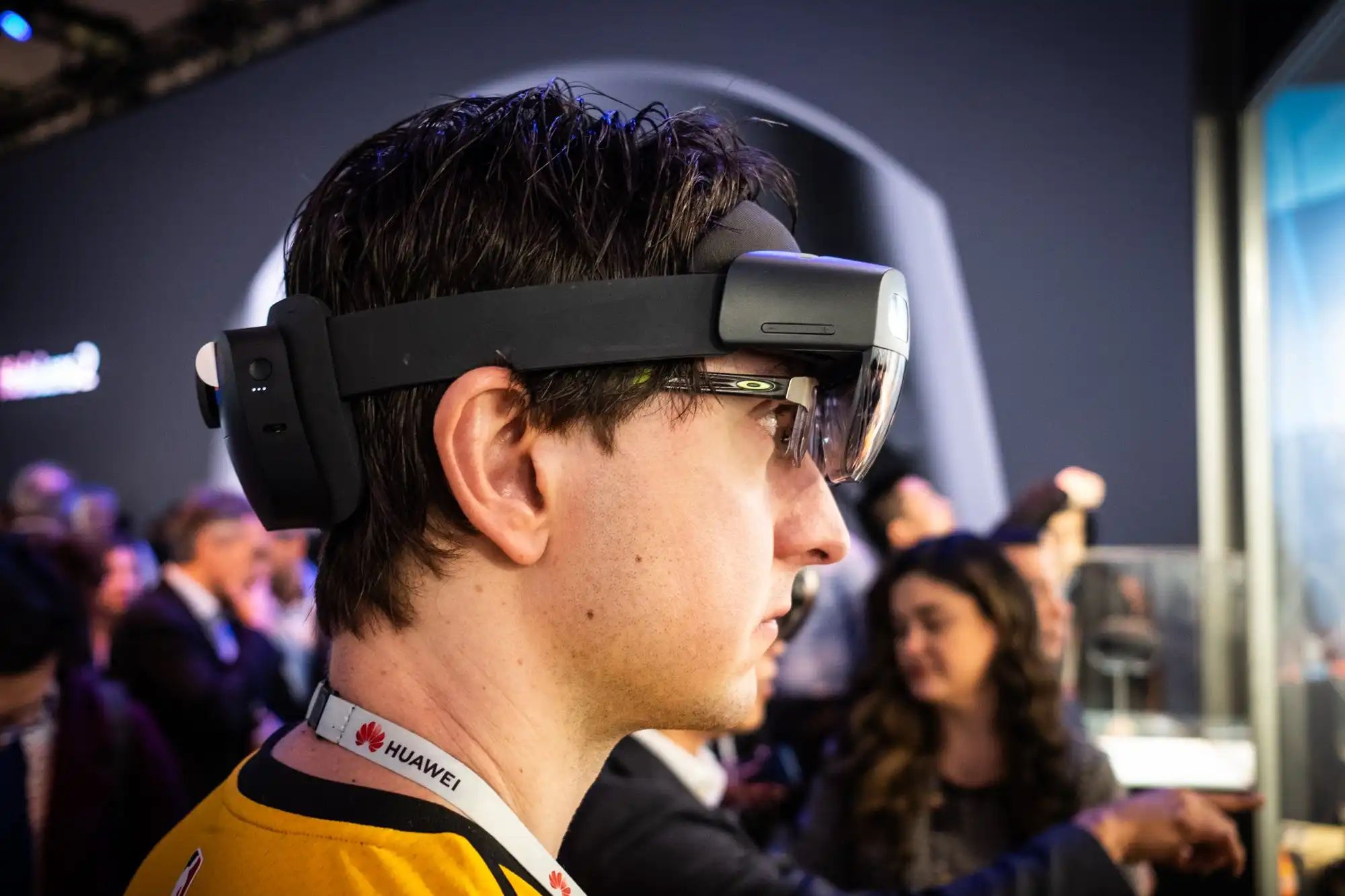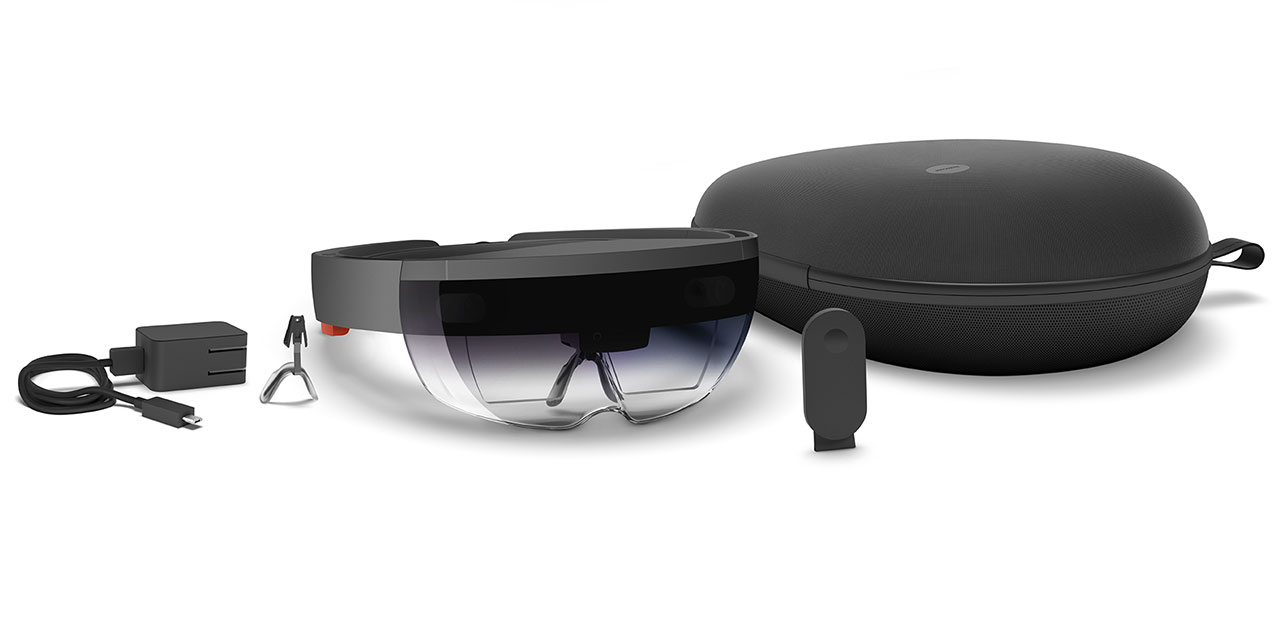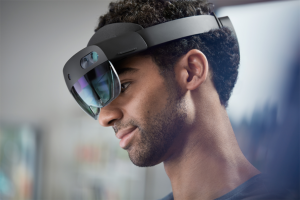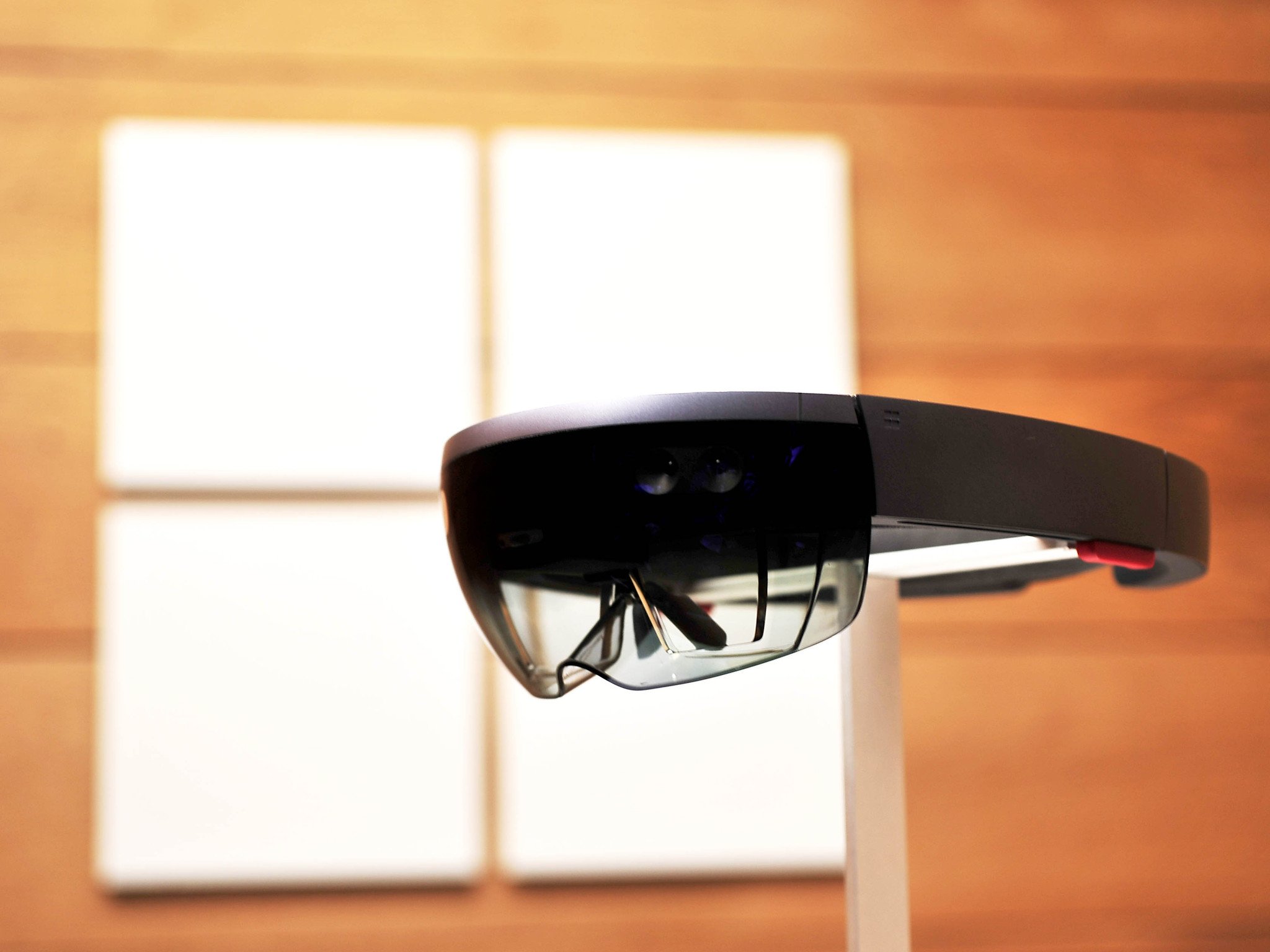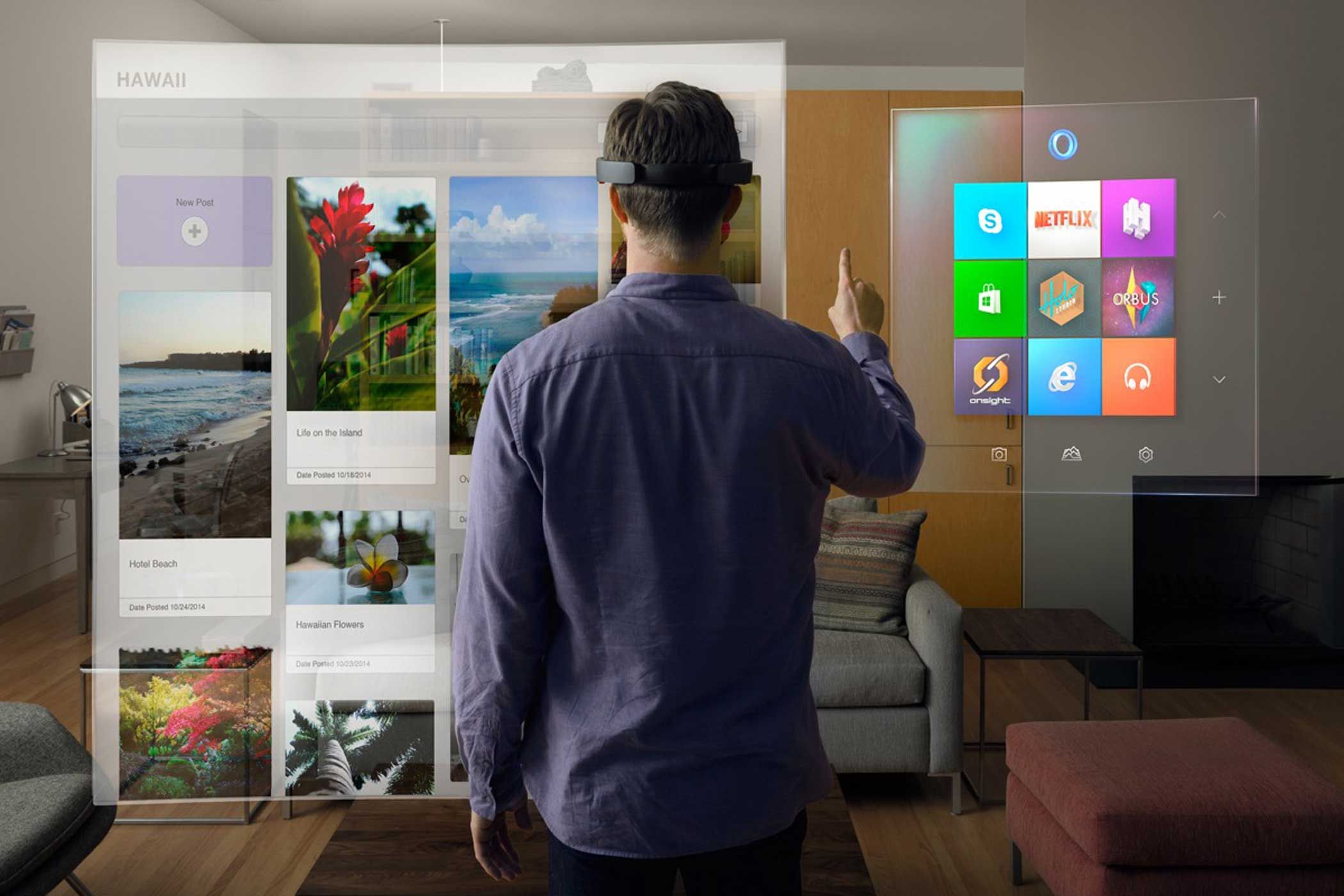Introduction
Virtual reality has been a hot topic in the tech world for several years, captivating both consumers and developers alike. One of the most exciting advancements in this field is Microsoft’s HoloLens, a mixed reality headset that allows users to interact with holograms in their own environment. With its potential to revolutionize industries such as healthcare, education, and entertainment, HoloLens has garnered significant attention.
In this article, we will explore the development and potential of HoloLens, as well as the substantial investment that Microsoft has made to bring this groundbreaking technology to fruition. From its initial investment to additional funding from both Microsoft and external companies, we will delve into the financial support that has propelled the advancement of HoloLens.
Before we dive into the details of the investments surrounding HoloLens, let’s take a closer look at the development of this revolutionary technology. Microsoft unveiled the first version of HoloLens in 2016, offering developers and early adopters the chance to experiment with its capabilities. Since then, the company has continued to refine and enhance the device, introducing new features and improvements with each iteration.
Unlike virtual reality headsets that immerse users in a completely digital environment, HoloLens blends the real world with holographic images, creating a mixed reality experience. This allows users to maintain their interaction with the physical surroundings while simultaneously engaging with virtual elements. The device is equipped with sensors, cameras, and speakers that enable users to interact with holograms through gestures, voice commands, and even eye tracking.
The potential applications of HoloLens are vast and varied. In the healthcare industry, for example, surgeons can use the device to visualize patient data and overlay it onto the surgical site, improving precision and reducing the risk of complications. In education, students can explore interactive 3D models and simulations, making complex subjects more engaging and comprehensible. Additionally, HoloLens has the potential to revolutionize the gaming and entertainment industries, enabling immersive experiences that blur the boundaries between real and virtual worlds.
The Development of HoloLens
The development of HoloLens is a testament to Microsoft’s commitment to innovation and pushing the boundaries of technology. The journey to bring this groundbreaking mixed reality headset to market has been a long and iterative process, driven by a team of passionate engineers and developers.
Microsoft first revealed HoloLens to the world in 2015, showcasing a prototype that captured the imagination of both tech enthusiasts and industry professionals. This initial version, referred to as the Development Edition, was made available to select developers and partners who were eager to explore the possibilities of mixed reality.
With the feedback and insights gathered from these early adopters, Microsoft went back to the drawing board to refine and improve upon the HoloLens experience. The company released several updates and iterations, each bringing significant enhancements in terms of comfort, field of view, and overall performance.
One of the challenges faced by the HoloLens development team was finding the balance between immersion and the ability to interact with the real world. The device needed to provide a convincing and seamless mixed reality experience while ensuring users remained aware of their surroundings. Achieving this delicate balance required extensive research and experimentation.
The development of HoloLens also involved creating an ecosystem that would support the creation and distribution of compelling mixed reality applications. Microsoft introduced the Windows Mixed Reality platform, which allowed developers to build immersive experiences using familiar tools and languages such as Unity and C#. This platform not only empowered developers but also fostered a vibrant community of creators who were eager to push the boundaries of what was possible with mixed reality.
Another aspect of HoloLens’ development journey was the integration of advanced spatial mapping and tracking technologies. These technologies enabled the device to understand the physical environment, detect surfaces, and accurately place holograms within the user’s surroundings. This level of spatial understanding was crucial to creating realistic and interactive mixed reality experiences.
Throughout its development, Microsoft collaborated closely with various industries to understand their unique challenges and create tailored solutions. This collaboration resulted in industry-specific applications and use cases, ranging from architectural visualization and industrial design to remote collaboration and training simulations.
From its initial prototype to the latest iteration, HoloLens has come a long way. The dedication and commitment of the development team at Microsoft have transformed HoloLens from an ambitious idea into a groundbreaking piece of technology. The continuous improvement and innovation have positioned HoloLens as a leader in the mixed reality space and set the stage for its potential to revolutionize numerous industries.
The Potential of HoloLens
HoloLens has the potential to reshape the way we interact with technology and the world around us. Its unique mixed reality capabilities open up a realm of possibilities across various industries, from healthcare and education to entertainment and beyond.
In the healthcare industry, HoloLens offers a range of applications that can improve patient care and medical training. Surgeons can use the device to overlay medical images, such as CT scans or MRI results, directly onto a patient’s body during surgery. This enables them to view critical information in real-time and make precise decisions, improving surgical outcomes. Additionally, HoloLens can be used for medical training, allowing students to practice complex procedures in a realistic, virtual environment before performing them on actual patients.
HoloLens also holds enormous potential in the field of education. The device can transform traditional learning experiences by bringing subjects to life through interactive 3D models and simulations. Students can explore the human body up close, travel back in time to historic events, or dive deep into the mysteries of the universe. This immersive and engaging approach to education enhances understanding and retention, making learning a more enjoyable and effective experience.
Moreover, HoloLens can revolutionize the way we collaborate and communicate. With its ability to create shared holographic experiences, users can work together in real-time, regardless of their physical location. Architects can collaborate on building designs, engineers can visualize complex systems, and remote teams can have virtual meetings that simulate face-to-face interactions. HoloLens transcends the limitations of distance, fostering collaboration and productivity like never before.
Entertainment is another industry ripe for transformation with the use of HoloLens. The device can bring characters and creatures from movies and games into the user’s physical environment, creating an immersive and interactive experience. Imagine watching a movie and having your favorite characters appear right in front of you, or playing a video game where the action takes place not just on a screen but all around you. HoloLens has the potential to revolutionize storytelling and gaming, making entertainment more immersive and engaging than ever before.
While healthcare, education, collaboration, and entertainment are just a few of the industries that can benefit from HoloLens, its potential extends to many other fields as well. From designing and visualizing architectural spaces to enhancing manufacturing processes and employee training, the possibilities are vast.
The potential of HoloLens lies not only in the technology itself but also in the creativity and innovation it inspires. As developers and creators continue to push the boundaries of mixed reality, new and exciting applications will undoubtedly emerge, unlocking even more potential for this groundbreaking technology.
Funding for HoloLens
Developing a revolutionary technology like HoloLens requires significant financial investment. Microsoft recognized the immense potential of mixed reality and was willing to pour substantial funding into the development and advancement of HoloLens.
Microsoft’s initial investment in HoloLens was a testament to their commitment to pushing the boundaries of technology. While the exact amount of the initial investment has not been publicly disclosed, industry analysts estimate that it may have exceeded $1 billion. This shows the level of confidence that Microsoft had in the potential of HoloLens and their dedication to making it a reality.
As the development of HoloLens progressed, Microsoft continued to invest in the technology, allocating additional funding to further refine and enhance the device. This ongoing investment allowed the development team to address technical challenges, improve the device’s performance, and expand its capabilities.
In addition to Microsoft’s own funding, the company also sought external investors to support the development of HoloLens. In January 2015, Microsoft announced a partnership with In-Q-Tel, the strategic investment firm that supports advancements in technology for the U.S. intelligence community. This collaboration not only brought additional funding to HoloLens but also opened up opportunities for potential applications of the technology in the defense and security sectors.
Furthermore, Microsoft has actively pursued collaborations with other companies to fuel the advancement of HoloLens. In 2018, the tech giant formed a partnership with the global industrial automation company, Trimble Inc. The collaboration aimed to integrate HoloLens into Trimble’s solutions, enabling professionals in industries such as construction and engineering to leverage the device for enhanced spatial understanding and visualization.
Another significant funding milestone for HoloLens occurred in 2020 when Microsoft secured a contract worth $480 million with the U.S. Army. Under this agreement, the military would receive modified versions of HoloLens for use in combat and training scenarios. This contract not only propelled the development of HoloLens but also highlighted the device’s potential in critical areas such as defense and national security.
In summary, the development and advancement of HoloLens have been powered by significant funding from Microsoft, as well as collaborations with external investors and companies. The company’s commitment to investing in the technology showcases their belief in its potential to revolutionize industries and shape the future of mixed reality.
Microsoft’s Initial Investment
When Microsoft first embarked on the development of HoloLens, they recognized the need for substantial financial investment to turn their vision into reality. While the exact amount of Microsoft’s initial investment in HoloLens has not been publicly disclosed, industry analysts estimate that it may have exceeded $1 billion.
This sizable investment reflects Microsoft’s commitment to advancing the field of mixed reality and their confidence in the potential of HoloLens. By dedicating significant resources to HoloLens, Microsoft demonstrated their belief in the technology’s ability to revolutionize industries and create new possibilities.
Microsoft’s initial investment in HoloLens was geared towards various aspects of development. It encompassed the research and development required to bring the device to life, the engineering behind its unique mixed reality capabilities, as well as the creation of an ecosystem that would support the development and distribution of applications for HoloLens.
One of the key areas of focus for Microsoft’s investment was the refinement and enhancement of the HoloLens hardware. The company invested in cutting-edge technologies, such as advanced sensors, cameras, and speakers, that would enable users to interact seamlessly with holograms in their physical environment. The development of comfortable and user-friendly hardware was also a priority, with iterative improvements made to ensure a more immersive and enjoyable user experience.
In addition to hardware development, Microsoft’s investment extended to the software infrastructure of HoloLens. This involved creating the Windows Mixed Reality platform, which provided developers with the tools and resources necessary to build compelling mixed reality experiences. Microsoft invested in refining the development tools, optimizing performance, and ensuring compatibility with popular programming languages and frameworks.
Furthermore, Microsoft’s initial investment played a critical role in attracting top talent to work on the HoloLens project. The company assembled a team of dedicated engineers, developers, and researchers who were passionate about pushing the boundaries of technology. The investment allowed Microsoft to offer competitive salaries, provide state-of-the-art facilities, and support ongoing research and innovation.
Ultimately, Microsoft’s initial investment in HoloLens laid the foundation for the remarkable advancements that have been achieved with the technology. It fueled the development of the hardware, software, and talent necessary to bring mixed reality to life. Without this significant initial investment, HoloLens would not have reached the level of sophistication and potential that it holds today.
Additional Funding from Microsoft
Beyond its initial investment, Microsoft has continued to allocate substantial funding to propel the development and advancement of HoloLens. This ongoing financial support has been instrumental in refining the device, expanding its capabilities, and pushing the boundaries of mixed reality technology.
One of the key focuses of Microsoft’s additional funding has been to address technical challenges and improve the performance of HoloLens. By allocating financial resources, Microsoft has enabled the development team to conduct research, iterate on the hardware and software, and optimize the device for a better user experience. This continuous investment has allowed HoloLens to evolve and mature with each iteration.
Moreover, Microsoft has invested in expanding the ecosystem surrounding HoloLens. This includes funding the development of new applications, tools, and services that enhance the overall HoloLens experience. By supporting developers and providing resources, such as software development kits (SDKs), Microsoft has fostered a vibrant community that has contributed to the growing library of mixed reality content available for HoloLens.
Microsoft’s additional funding has also focused on the integration of HoloLens into various industries and sectors. The company has established partnerships with organizations and companies to explore the potential applications of HoloLens in fields such as healthcare, education, architecture, engineering, and more. These collaborations have not only provided financial backing but have also brought expertise and industry-specific insights, further enriching the development of HoloLens.
Furthermore, Microsoft’s continued investment in HoloLens has enabled the exploration of new features and technologies. This includes advancements in spatial mapping, object recognition, and gesture-based interactions. The financial support has allowed for research and development in cutting-edge areas, ensuring that HoloLens remains at the forefront of mixed reality innovation.
Microsoft’s commitment to providing additional funding for HoloLens demonstrates their long-term vision and dedication to pushing the boundaries of technology. By consistently investing in the development and advancement of HoloLens, Microsoft is ensuring that the device continues to evolve and unlock new possibilities in mixed reality.
In summary, Microsoft’s additional funding has been crucial in driving the ongoing development and improvement of HoloLens. It has supported technical enhancements, ecosystem expansion, industry partnerships, and the exploration of new technologies. Through these investments, Microsoft has solidified its position as a leader in mixed reality and reaffirmed its commitment to advancing HoloLens.
Investment from Other Companies
In addition to Microsoft’s significant funding, other companies have recognized the potential of HoloLens and have made investments to support its development and growth. These investments highlight the widespread belief in the transformative power of mixed reality and the value that HoloLens brings to various industries.
One notable collaboration in the development of HoloLens was Microsoft’s partnership with In-Q-Tel, a strategic investment firm that supports technology advancements for the U.S. intelligence community. This collaboration not only provided additional funding for HoloLens but also opened up opportunities for potential applications of the technology in the defense and security sectors. This partnership demonstrated the interest and confidence that companies outside the technology sector have in the potential of HoloLens.
Furthermore, Microsoft has fostered collaborations with other companies to fuel the advancement of HoloLens. One notable partnership was formed in 2018 when Microsoft joined forces with Trimble Inc., a global industrial automation company. This collaboration aimed to integrate HoloLens into Trimble’s solutions, allowing professionals in industries such as construction and engineering to leverage the device for enhanced spatial understanding and visualization. The investment from Trimble further validated the potential of HoloLens in industrial applications.
Another significant milestone in terms of external investment came when Microsoft secured a contract worth $480 million with the U.S. Army in 2020. This contract involved the supply of modified versions of HoloLens to the military for use in combat and training scenarios. The investment from the U.S. Army not only provided substantial funding but also highlighted the potential of HoloLens in critical areas such as defense and national security.
Additionally, a number of other companies and organizations have expressed interest in HoloLens and have explored potential collaborations or investments. These include companies in industries such as healthcare, education, manufacturing, and entertainment, among others. The diverse range of companies investing in HoloLens underscores the broad potential applications of the technology across various sectors.
The investment and collaboration from these external companies have not only provided financial backing for HoloLens but have also brought industry-specific expertise, insights, and use cases. This synergy has propelled the development of HoloLens and expanded its potential applications beyond what Microsoft alone could achieve.
In summary, the investment from other companies in HoloLens is a testament to the widespread belief in the potential of mixed reality and the value that HoloLens brings to various industries. These collaborations and investments have not only provided additional funding but have also brought expertise and industry-specific insights, further accelerating the development and potential of HoloLens.
Total Investment in HoloLens
The total investment in HoloLens, combining Microsoft’s funding and investments from other companies, has been substantial. While exact figures may not be publicly disclosed, industry experts estimate that the total investment in HoloLens exceeds several billion dollars.
Microsoft’s initial investment in HoloLens alone is estimated to have surpassed $1 billion. This significant financial commitment from Microsoft showcased their dedication to bringing the groundbreaking mixed reality technology to market. It laid the foundation for the development, refinement, and enhancement of HoloLens, from the hardware and software to the creation of an ecosystem that supports the growth of mixed reality applications.
Microsoft’s ongoing funding for HoloLens has been vital in driving continuous improvements and innovations. This additional investment has enabled technical advancements, ecosystem expansion, and industry partnerships, further solidifying HoloLens’ position as a leader in the mixed reality space.
Additionally, investments from other companies have played a role in supporting the development and growth of HoloLens. Collaborations with companies like In-Q-Tel and Trimble Inc. have not only provided financial backing but have also brought industry-specific expertise and opportunities for application in sectors such as defense, security, construction, and engineering.
Furthermore, the contract worth $480 million secured with the U.S. Army for modified versions of HoloLens reinforced the potential of the technology in critical areas such as military training and combat scenarios. This contract provided significant financial support and further validation of the value that HoloLens brings to defense and national security.
Collectively, the investment in HoloLens from Microsoft and other companies has established a strong financial foundation for the development and growth of the technology. This substantial investment not only demonstrates the belief in the transformative potential of mixed reality but also fuels ongoing research, development, and innovation in HoloLens.
While the exact total investment in HoloLens may remain undisclosed, it is evident that the financial backing poured into the technology has been unprecedented. The continuous investment from Microsoft, coupled with collaborations and investments from other companies, has propelled HoloLens to new heights, expanded its potential applications, and positioned it as a frontrunner in the mixed reality revolution.
Conclusion
HoloLens, Microsoft’s groundbreaking mixed reality headset, has the potential to reshape industries and revolutionize the way we interact with technology. From healthcare and education to collaboration and entertainment, HoloLens offers a range of applications that can enhance experiences and unlock new possibilities.
The development of HoloLens has been fueled by substantial investment from Microsoft, with an initial funding estimated to exceed $1 billion. This financial support has enabled the refinement of hardware and software, the creation of a robust ecosystem, and the attraction of top talent to drive innovation.
In addition to Microsoft’s investment, collaborations and investments from other companies have further fueled the growth of HoloLens. Partnerships with organizations like In-Q-Tel and Trimble Inc., as well as contracts with the U.S. Army, have provided financial backing, industry expertise, and widened the potential applications of HoloLens.
The total investment in HoloLens, combining Microsoft’s funding and investments from other companies, is estimated to exceed several billion dollars. This level of investment underscores the belief in the transformative power of mixed reality and the value that HoloLens brings to various sectors.
As HoloLens continues to evolve and innovate, its potential applications will continue to expand. The device has the power to revolutionize industries such as healthcare, education, collaboration, and entertainment, offering immersive and interactive experiences that blur the line between the real and virtual world.
While the exact figures of the total investment in HoloLens may remain undisclosed, the undeniable financial backing from Microsoft and other companies is a testament to the substantial commitment made to advance the technology. The continuous investment fuels ongoing research, development, and innovation, positioning HoloLens as a frontrunner in the mixed reality landscape.
With advancements and investments propelling HoloLens forward, the future of mixed reality looks promising. As the technology continues to mature, we can expect to see HoloLens unlocking new possibilities, transforming industries, and shaping the way we interact with the world around us.







